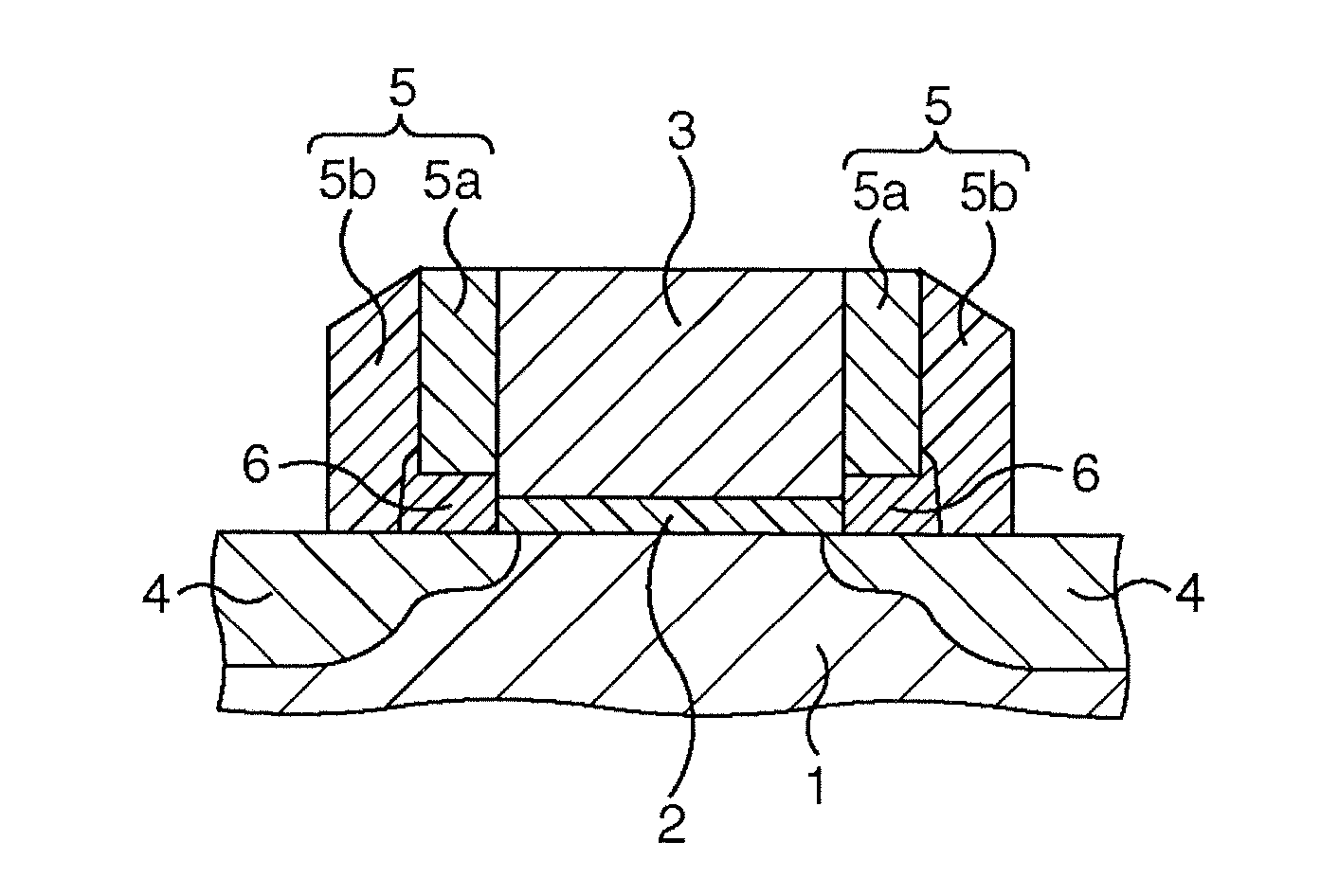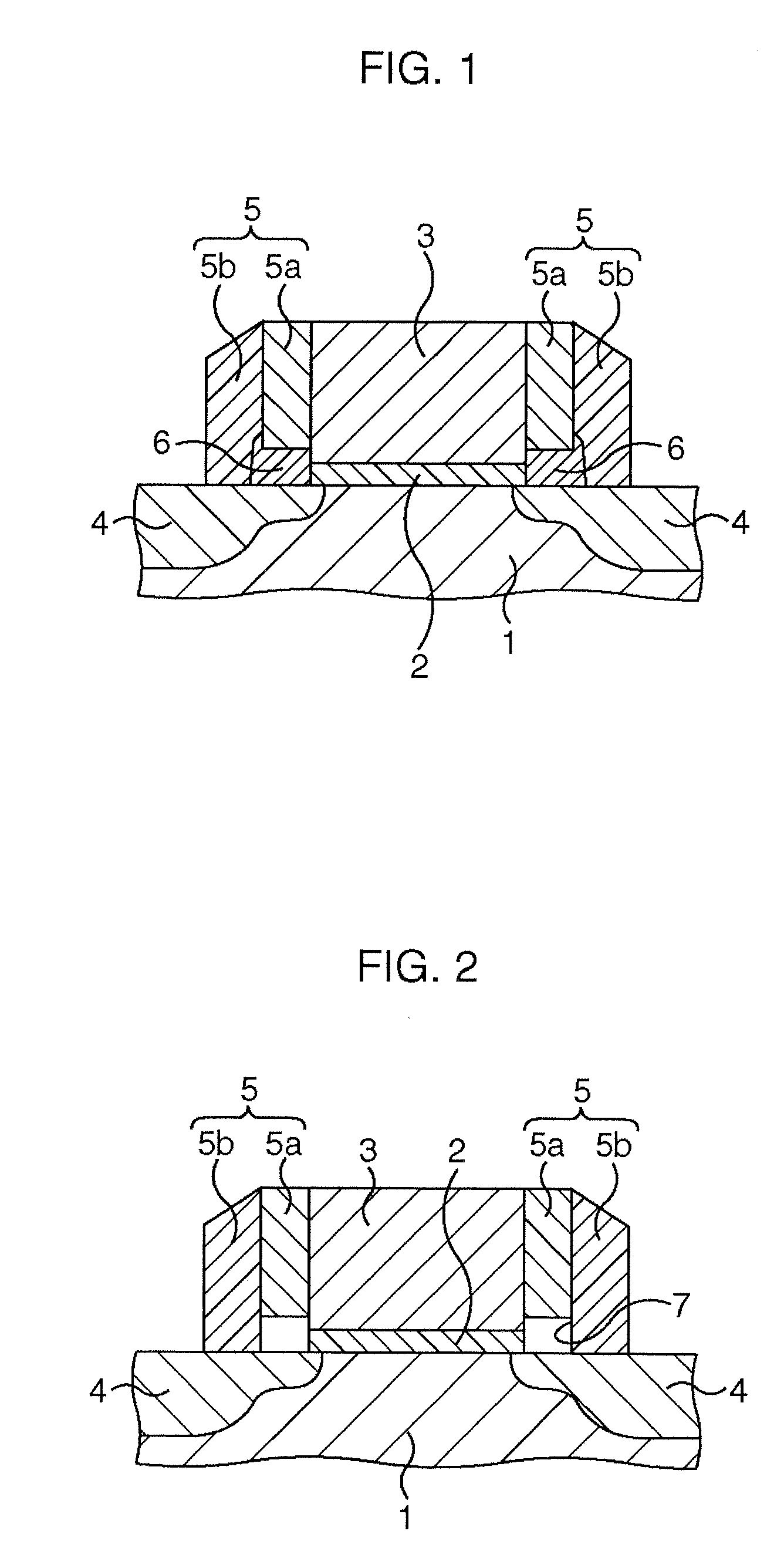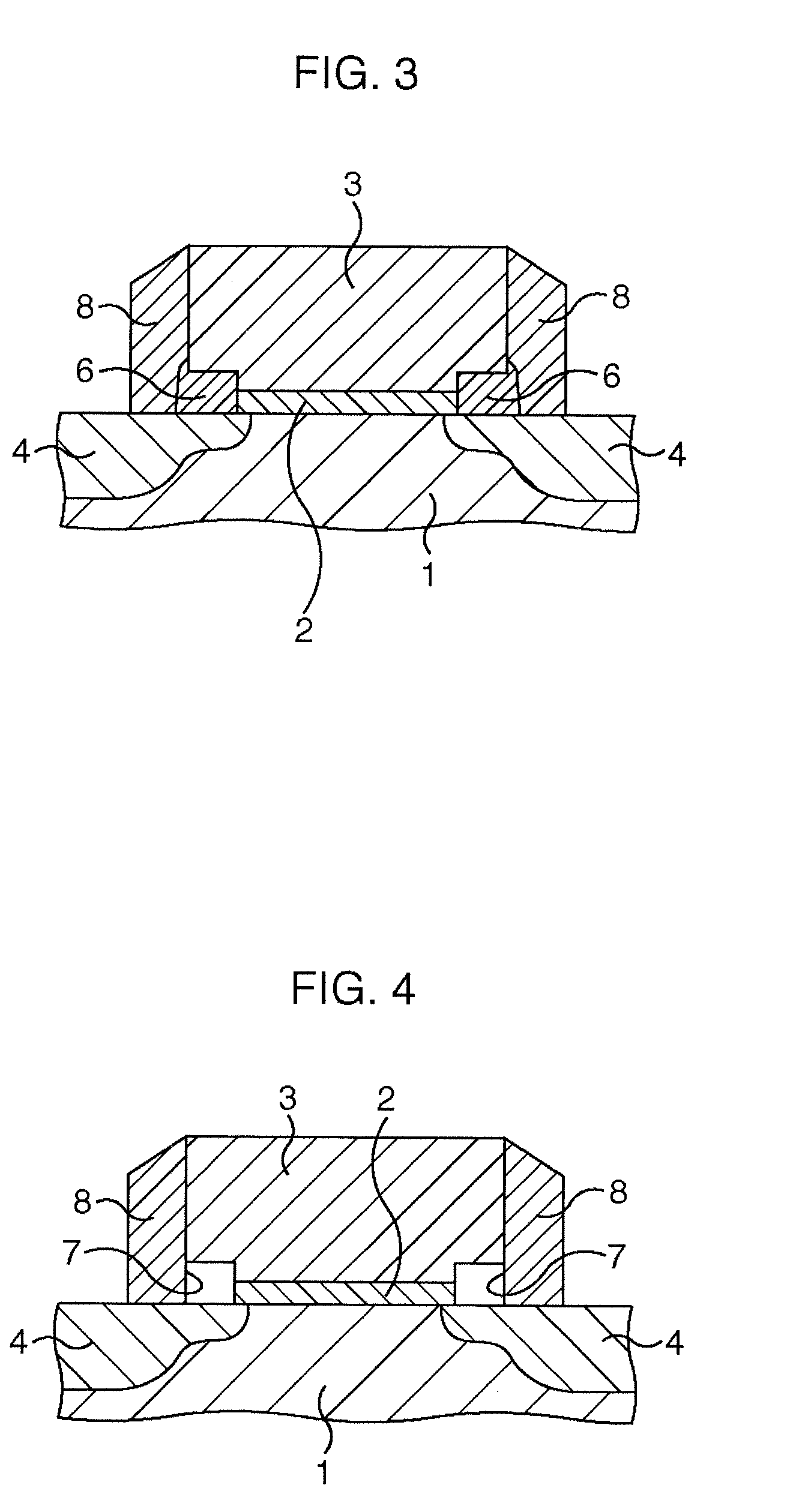Semiconductor device and method for manufacturing the same
- Summary
- Abstract
- Description
- Claims
- Application Information
AI Technical Summary
Benefits of technology
Problems solved by technology
Method used
Image
Examples
first embodiment
[0029] This embodiment discloses a structure of a semiconductor device that has a MOS transistor structure having a gate electrode, a source, and a drain, and a method for manufacturing the same. Here, the MOS transistor structure is explained together with its manufacturing process for convenience.
[0030]FIGS. 5A to 5G are schematic sectional views showing, in a process order, a method for manufacturing the MOS transistor relating to this embodiment.
[0031] First, as shown in FIG. 5A, a polycrystalline silicon film (not shown) is deposited on, for example, a p-type silicon semiconductor substrate 11 via a gate insulation film 12 by a CVD method or the like, and patterning of the polycrystalline silicon film and the gate insulation film 12 into an electrode shape causes to form a gate electrode 13.
[0032] Next, as shown in FIG. 5B, for example, a silicon oxide film (not shown) is deposited on the semiconductor device 11 by the CVD method or the like to cover the gate electrode 13, a...
second embodiment
[0039]FIGS. 6A to 6F are schematic sectional views showing, in a process order, a method for manufacturing a MOS transistor relating to this embodiment.
[0040] First, as shown in FIG. 6A, a polycrystalline silicon film (not shown) is deposited on, for example, a p-type silicon semiconductor substrate 11 via a gate insulation film 12 by a CVD method or the like, and patterning of the polycrystalline silicon film and the gate insulation film 12 into an electrode shape causes to form a gate electrode 13.
[0041] Next, as shown in FIG. 6B, for example, a silicon oxide film (not shown) is deposited on the semiconductor device 11 by the CVD method or the like to cover the gate electrode 13, and full anisotropic etching (etch back) of this silicon oxide film causes to form thin first films 14a only on side surfaces of the gate electrode 13 and the gate insulation film 12.
[0042] Next, as shown in FIG. 6C, only lower portions of the first films 14a are selectively removed by, for example, we...
third embodiment
[0047]FIGS. 7A to 7F are schematic sectional views showing, in a process order, a method for manufacturing a MOS transistor relating to this embodiment.
[0048] First, as shown in FIG. 7A, a polycrystalline silicon film (not shown) is deposited on, for example, a p-type silicon semiconductor substrate 11 via a gate insulation film 12 by a CVD method or the like, and patterning of the polycrystalline silicon film and the gate insulation film 12 into an electrode shape causes to form a gate electrode 13.
[0049] Next, as shown in FIG. 7B, side wall lower portions of the gate electrode 13 and a part of the gate insulation film 12 are removed by etching to make it notch-shaped. The notch sections become low permittivity regions 18.
[0050] Next, as shown in FIG. 7C, ion implantation of an n-type impurity such as phosphorus (P) is performed using the gate electrode 13 as a mask, to form a pair of extension regions 16 on a surface layer of the semiconductor substrate 11.
[0051] Next, as show...
PUM
 Login to View More
Login to View More Abstract
Description
Claims
Application Information
 Login to View More
Login to View More - R&D
- Intellectual Property
- Life Sciences
- Materials
- Tech Scout
- Unparalleled Data Quality
- Higher Quality Content
- 60% Fewer Hallucinations
Browse by: Latest US Patents, China's latest patents, Technical Efficacy Thesaurus, Application Domain, Technology Topic, Popular Technical Reports.
© 2025 PatSnap. All rights reserved.Legal|Privacy policy|Modern Slavery Act Transparency Statement|Sitemap|About US| Contact US: help@patsnap.com



